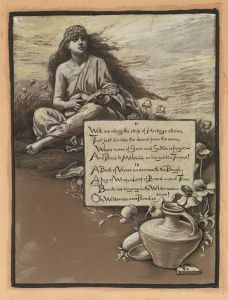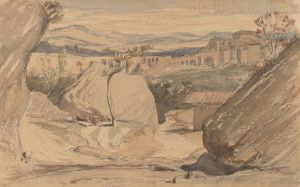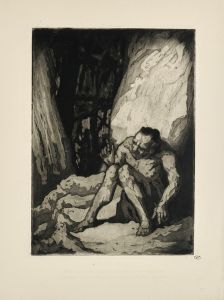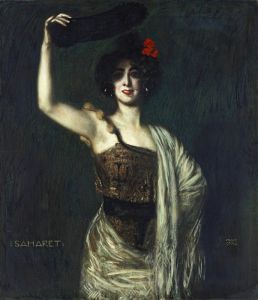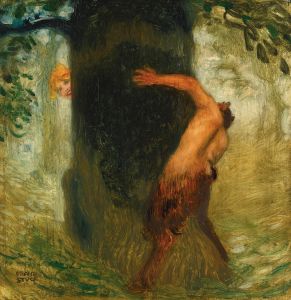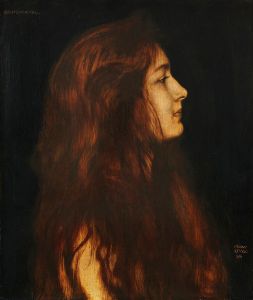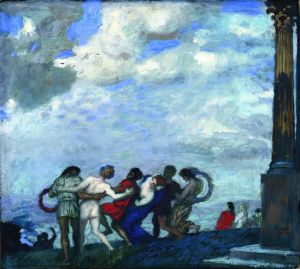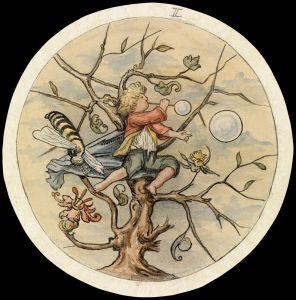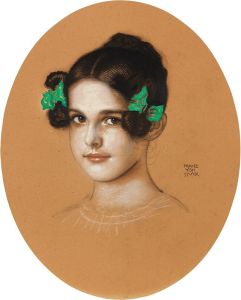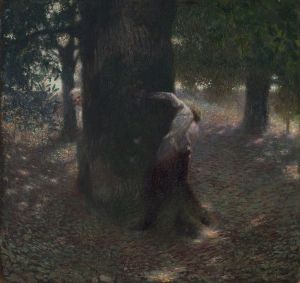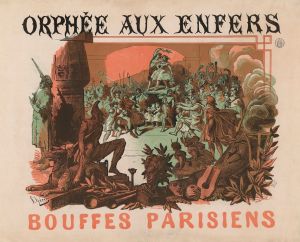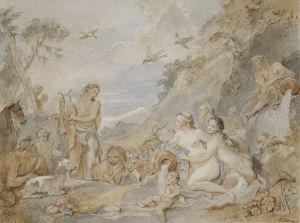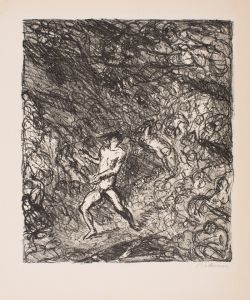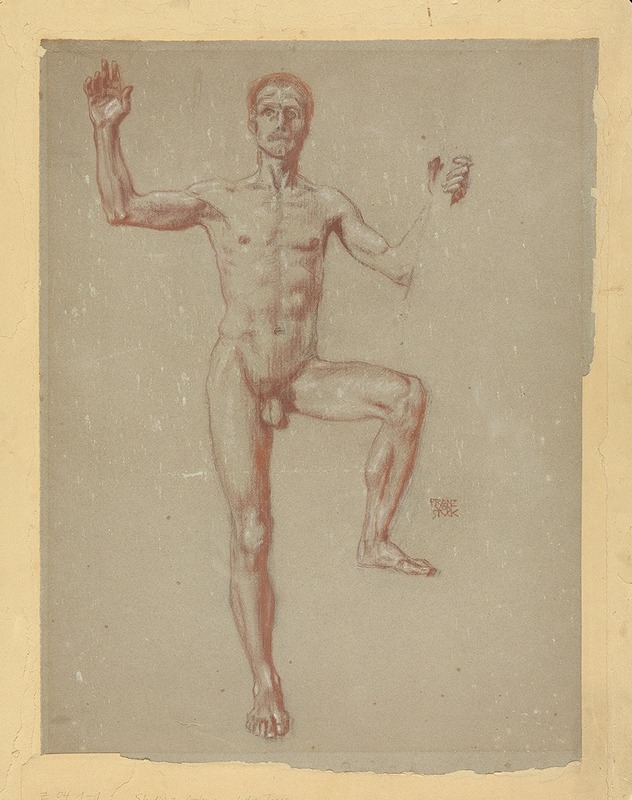
Studie zu ‘Orpheus und die Tiere’
A hand-painted replica of Franz von Stuck’s masterpiece Studie zu ‘Orpheus und die Tiere’, meticulously crafted by professional artists to capture the true essence of the original. Each piece is created with museum-quality canvas and rare mineral pigments, carefully painted by experienced artists with delicate brushstrokes and rich, layered colors to perfectly recreate the texture of the original artwork. Unlike machine-printed reproductions, this hand-painted version brings the painting to life, infused with the artist’s emotions and skill in every stroke. Whether for personal collection or home decoration, it instantly elevates the artistic atmosphere of any space.
Franz von Stuck's Studie zu ‘Orpheus und die Tiere’ (Study for ‘Orpheus and the Animals’) is a preparatory work by the German Symbolist painter Franz von Stuck (1863–1928). Stuck, a prominent figure in the Munich Secession movement, was known for his evocative and often mythologically inspired paintings, sculptures, and architectural designs. This study reflects his interest in classical mythology and his ability to merge symbolic and naturalistic elements in his art.
The subject of the study, Orpheus, is a legendary figure from Greek mythology, renowned for his extraordinary musical abilities. According to myth, Orpheus could charm all living creatures, including animals, with the sound of his lyre. This theme of harmony between humanity and nature was a recurring motif in Symbolist art, which often sought to explore the spiritual and emotional dimensions of existence.
The study likely served as a preparatory work for a larger or more finished piece, though it is unclear whether a final version of Orpheus und die Tiere was ever completed or remains extant. As a study, it would have allowed Stuck to experiment with composition, figure placement, and the interaction between Orpheus and the animals surrounding him. The work exemplifies Stuck's meticulous attention to detail and his ability to convey mood and atmosphere through his use of line and form.
Franz von Stuck's works often feature a dark, moody palette and a focus on mythological or allegorical themes. His art reflects the broader Symbolist movement's preoccupation with the mystical, the dreamlike, and the transcendent. Stuck's fascination with Orpheus aligns with these themes, as the mythological figure embodies the power of art and music to transcend the ordinary and connect with the divine.
The exact date of Studie zu ‘Orpheus und die Tiere’ is not well-documented, but it likely falls within the late 19th or early 20th century, during the height of Stuck's career. The study is an example of his broader artistic practice, which often involved creating detailed preparatory sketches and studies before executing his final works.
As with many of Stuck's works, this study reflects his dual role as both an artist and a teacher. Stuck was a professor at the Munich Academy of Fine Arts, where he influenced a generation of artists, including notable figures like Paul Klee and Wassily Kandinsky. His emphasis on drawing and preparatory studies was a hallmark of his teaching philosophy.
Today, Franz von Stuck is remembered as one of the leading figures of the Symbolist movement in Germany. His works are held in major collections and museums worldwide, including the Villa Stuck in Munich, which serves as a museum dedicated to his life and art. While Studie zu ‘Orpheus und die Tiere’ may not be as widely known as some of his other works, it remains an important example of his artistic process and his engagement with mythological themes.





